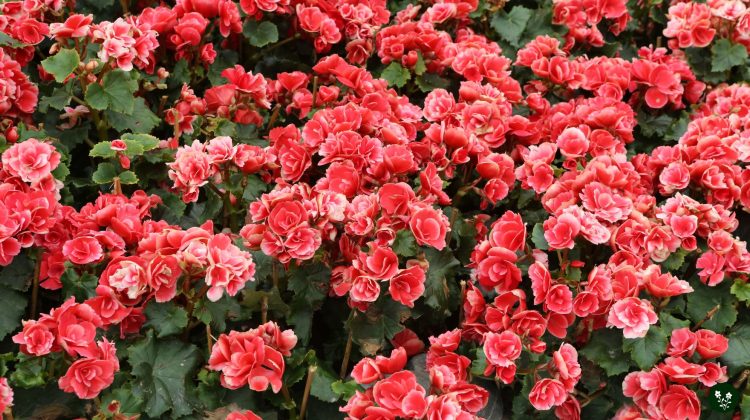
Begonia flowers are visually captivating and hold various meanings that can help you express your emotions or communicate subtly with others.
While exploring the realm of begonia flower symbolism, you’ll discover that these vibrant and varied blossoms signify love, hope, joy, and even caution in various situations.
One aspect of begonia flower symbolism you should remember is its representation of dark thoughts and warnings about future misfortunes or challenges.
This darker meaning, often found in literature, contrasts with the more positive associations of the flower, such as expressing gratitude and fostering harmonious connections with friends and family.
Understanding the various meanings of begonia flowers can give you a unique way to convey your feelings, whether gifting these vibrant blooms or growing them in your garden.
While deepening your knowledge of these vibrant flowers, keep in mind that their meanings go beyond their looks, encompassing the intricate feelings and relationships that influence our existence.
In this article, we'll cover
1. Begonia Flower Origins and Characteristics
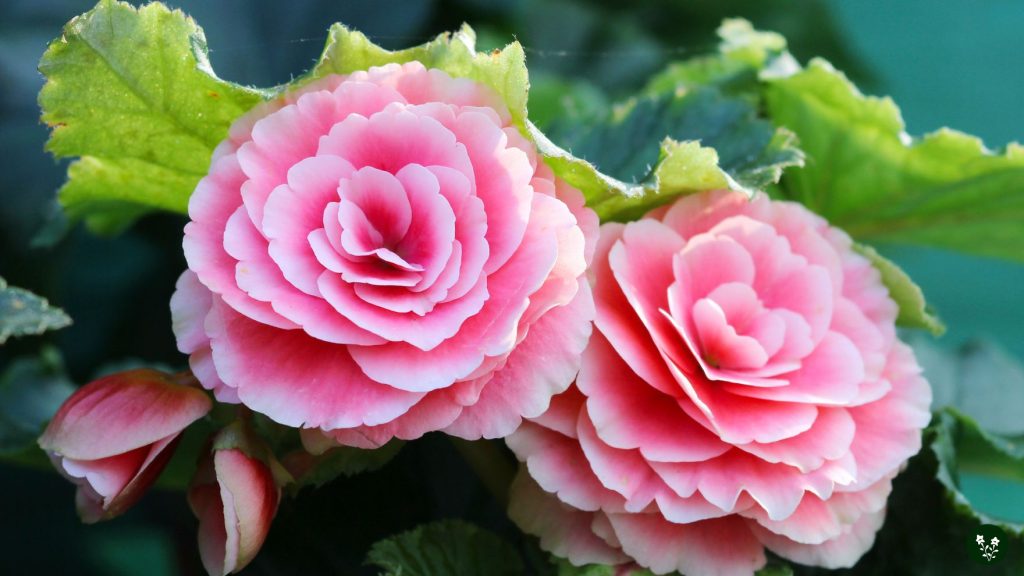
Botanical Classification
Begonia is a genus within the family Begoniaceae, encompassing over 2,000 species. These perennial flowering plants are native to moist subtropical and tropical climates.
Physical Features
Begonias have diverse physical characteristics, including succulent stems, colorful flowers, and decorative leaves.
The flowers often come in shades of pink, red, white, yellow, or orange.
The foliage, like the popular Polka Dot Begonia or Maculata varieties, can vary from green to purple or even spotted.
Different Types of Begonia
There are many types of Begonias for you to choose from, such as:
- Tuberous Begonia: Known for their large and showy flowers in varying colors. They grow from tubers and are typically grown as annuals.
- Rex Begonia: Valued for their vibrant and patterned leaves rather than their flowers. These are excellent choices for indoor plant enthusiasts.
- Angel Wing Begonia: Characterized by their wing-shaped leaves and clusters of tiny flowers. They are perfect for hanging baskets or as indoor plants.
- Polka Dot Begonia (Begonia Maculata): These stand out for their striking foliage with green leaves and white or silver spots. They make excellent decorative indoor plants.
Growing Conditions and Care
To help your Begonia thrive, consider the following tips:
- Provide well-draining, fertile soil for your Begonia to grow in.
- Ensure adequate humidity and consistent moisture, especially for indoor varieties.
- Position your Begonia in a location with bright, indirect light to protect it from intense sun rays.
- Maintain moderate room temperatures between 60 and 75°F (15 and 24°C) for optimal growth.
- Be cautious not to overwater your Begonia, which can lead to root rot and other issues.
Now that you are familiar with the origins, characteristics, and various types of Begonias, you can confidently select the best Begonia for your space and care for it properly.
2. What Does Begonia Symbolize
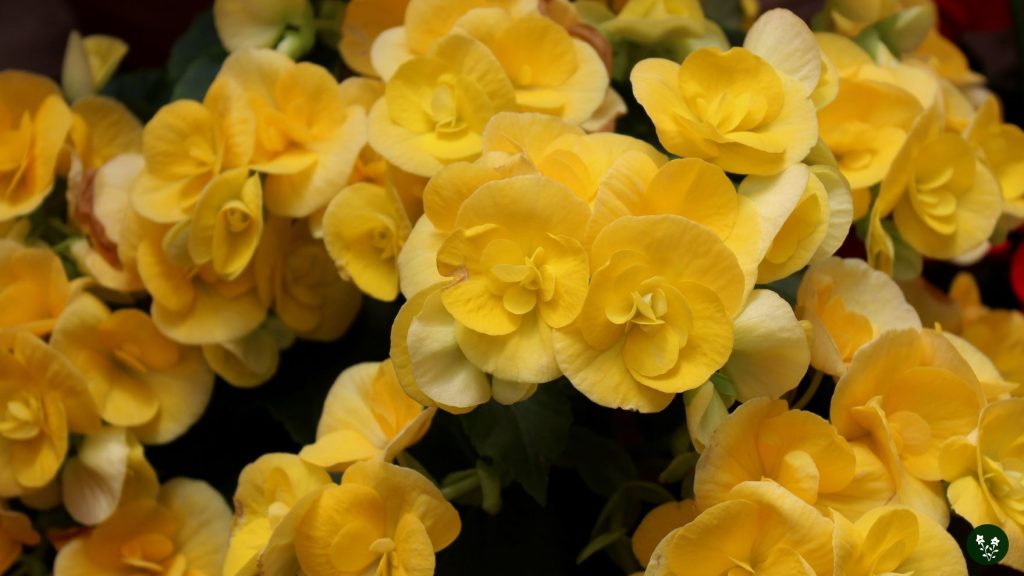
Navigating the world of begonias, you might be intrigued by the symbolism associated with these flowers.
Etymological Meaning
The Begonia flower carries several meanings depending on its color and context. Generally, it symbolizes uniqueness, harmony, gratitude, and caution.
Some even associate begonias with negative emotions like fear or representations of unseen dangers.
Regardless of these interpretations, begonias hold a special place in the language of flowers as a symbol of love and affection.
Cultural Significance
In Hindi culture, the begonia flower represents affection and love, expressing pleasure, longing, and happiness.
The Chinese also appreciate the beauty of begonias, connecting them with harmony and balance.
From a spiritual perspective, begonias can represent personal growth and transformation.
Their uniqueness makes them a symbol of individuality, encouraging you to embrace your strengths and characteristics.
While begonias generally convey positive emotions like harmony and gratitude, it’s important to remember that they can also symbolize caution and fear.
When gifting begonias, consider their context and choose colors that best communicate your feelings and intentions.
The symbolism of begonias extends beyond their attractive colors and shapes.
While discovering this stunning bloom, be sure to cherish and impart its abundant historical and cultural importance with others.
Pay attention to the situation and select begonias that most closely correspond to the meaning you wish to convey.
3. Common Colors of Begonia and Their Meaning
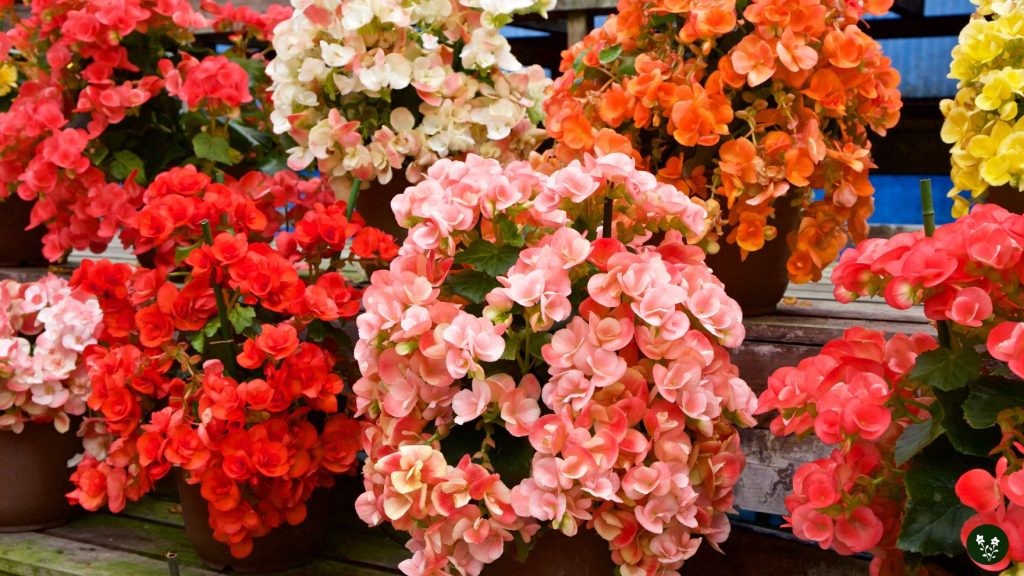
Begonias are beautiful flowers in various colors, each carrying distinct meanings. Uncover the meanings associated with some of the most popular begonia colors:
Red Begonia Flower Meaning
Red begonias symbolize love and romance. These vibrant flowers make a passionate statement, conveying strong emotions when gifted to a significant other.
Consider red begonias when you want to express your deep affection for someone special.
Pink Begonia Flower Meaning
Like their red counterparts, Pink begonias also represent love and romance but with a more subtle and delicate touch.
They are ideal for Valentine’s Day or anniversary celebrations, as they embody a gentle, heartfelt sentiment that is perfect for such occasions.
Yellow Begonia Flower Meaning
Yellow begonias represent happiness, joy, and wealth.
These cheerful flowers can easily brighten any room and can be given as a symbol of hope, friendship, or kindness.
Gift yellow begonias to bring some sunshine into a loved one’s life and to put a smile on their face.
Orange Begonia Flower Meaning
Orange begonias evoke enthusiasm, warmth, and energy. They are excellent for occasions where you want to encourage success, motivation, and achievement.
Presenting orange begonias to a friend or colleague can demonstrate your support and optimistic outlook towards their goals.
White Begonia Flower Meaning
White begonias symbolize pure innocence and a clean slate. These delicate flowers can be gifted to express a fresh start or new beginnings.
Consider white begonias for events like weddings or baptisms, where they can signify a promising and untainted journey ahead for the recipient.
4. Uses of Begonia Flower
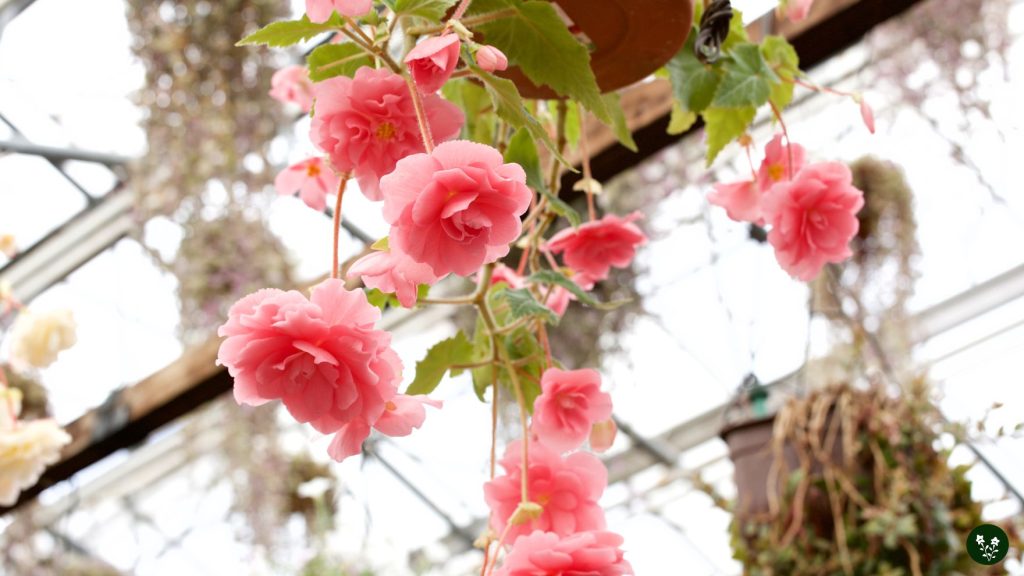
Begonia flowers are not only beautiful and meaningful, but they also have a variety of uses.
Your interest in these delicate blossoms may extend beyond their lovely appearance and symbolism once you learn how they can be utilized.
One of the significant uses of begonia flowers is their medicinal properties. Traditionally, they have been used to treat burns, kidney ailments, and toothaches.
With their many active species worldwide, you may find some of these benefits present across different varieties of begonias, including the vibrant scarlet ones.
Another fascinating use of begonias, particularly in the past, was polishing sword blades.
While this might not be a common practice today, it is an exciting and unique historical fact about these flowers.
Currently, begonias are often cultivated as ornamental plants. Their various colors and patterns add a beautiful touch to your garden or living space.
They can serve as lovely decorations while providing an appealing atmosphere due to their deeper meanings and symbolism.
Apart from these practical uses, begonia flowers can serve as an inspiration in artistic and creative endeavors.
Their unique appearance and diverse range of colors, including the bold scarlet shade, can be a great source of ideas in your projects, whether it’s painting, photography, or even fashion design.
5. Begonia Flower Fun Facts
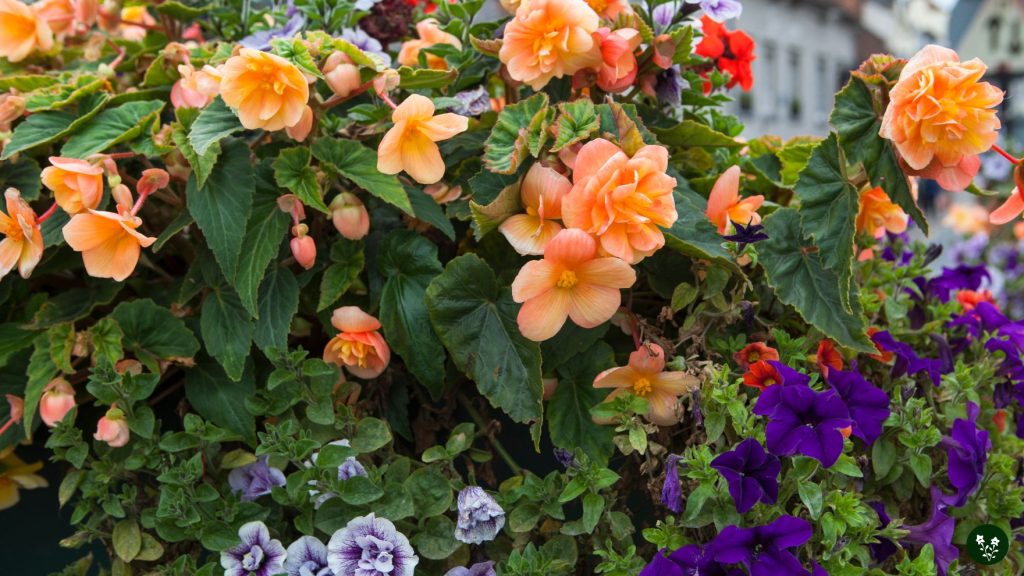
Immersing yourself in the world of begonia flowers, you’ll discover intriguing and delightful facts about these exquisite blooms:
- Begonias were first discovered by Charles Plumier in 1690 on the island of Santo Domingo (Dominican Republic).
- There are over 1,000 active species of flowering begonia plants, providing you with a wide variety to choose from and admire.
- Begonias symbolize caution, awareness, harmony, gratitude, individuality, and affection.
- The meanings of begonia flowers can vary depending on their color, so pay attention to the hue when considering what message you want to convey with your floral gift.
- These subtropical flowers are often given on anniversaries, as congratulatory gifts, or to express gratitude to someone.
- Begonias have a wide range of uses in horticulture, including houseplants, outdoor landscaping, and even ingredients in traditional medicines.
Uncovering the world of begonias, remember these fascinating facts and revel in the charm, symbolism, and history these flowers provide!
6. Suitable Gift Occasions for Begonia Flowers
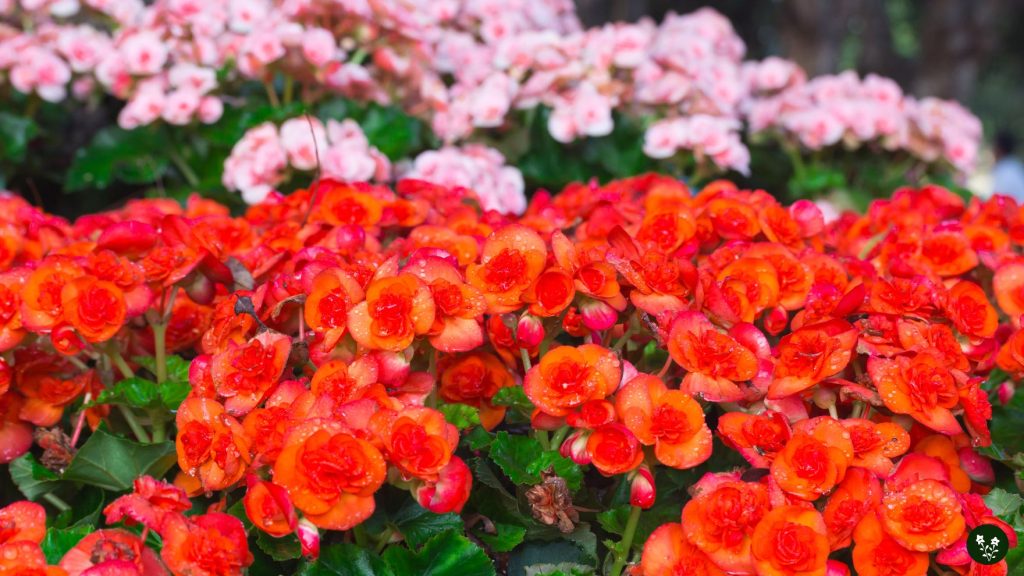
Begonia flowers make a lovely and thoughtful gift for various occasions.
Their unique meanings and vibrant colors can express different emotions and sentiments. Let’s explore some instances where gifting begonias would be ideal.
First of all, begonias symbolize individuality and harmony.
Gifting yellow or gold begonias can be an excellent way to congratulate someone on a significant accomplishment. It shows that you recognize and appreciate their dedication and hard work.
Another occasion for gifting begonias is when you want to express love and affection.
Red and pink begonias convey romance and love, making them perfect for Valentine’s Day, anniversaries, or simply as a spontaneous gesture to show your partner your feelings.
Consider yellow and gold begonias if you’re looking for a gift that sends a message of wealth, happiness, and contentment.
They can be a delightful choice for celebrating a new home, a job promotion, or any other joyful event in someone’s life.
White begonias, representing pure innocence, make a beautiful gift for events like christenings, baby showers, and weddings.
You can pair them with other white flowers to create an elegant and refined floral arrangement.
Considering their association with peaceful communication, gifting begonias can be a thoughtful way to initiate a calm and pleasant conversation with someone, making them a suitable gift for resolving misunderstandings or expressing apologies.
In summary, begonia flowers are versatile when it comes to gifting.
You can choose from their wide range of colors and meanings to create a thoughtful and personalized gift for special occasions.
Discover the hidden meanings behind your favorite flowers:
Leave a Reply